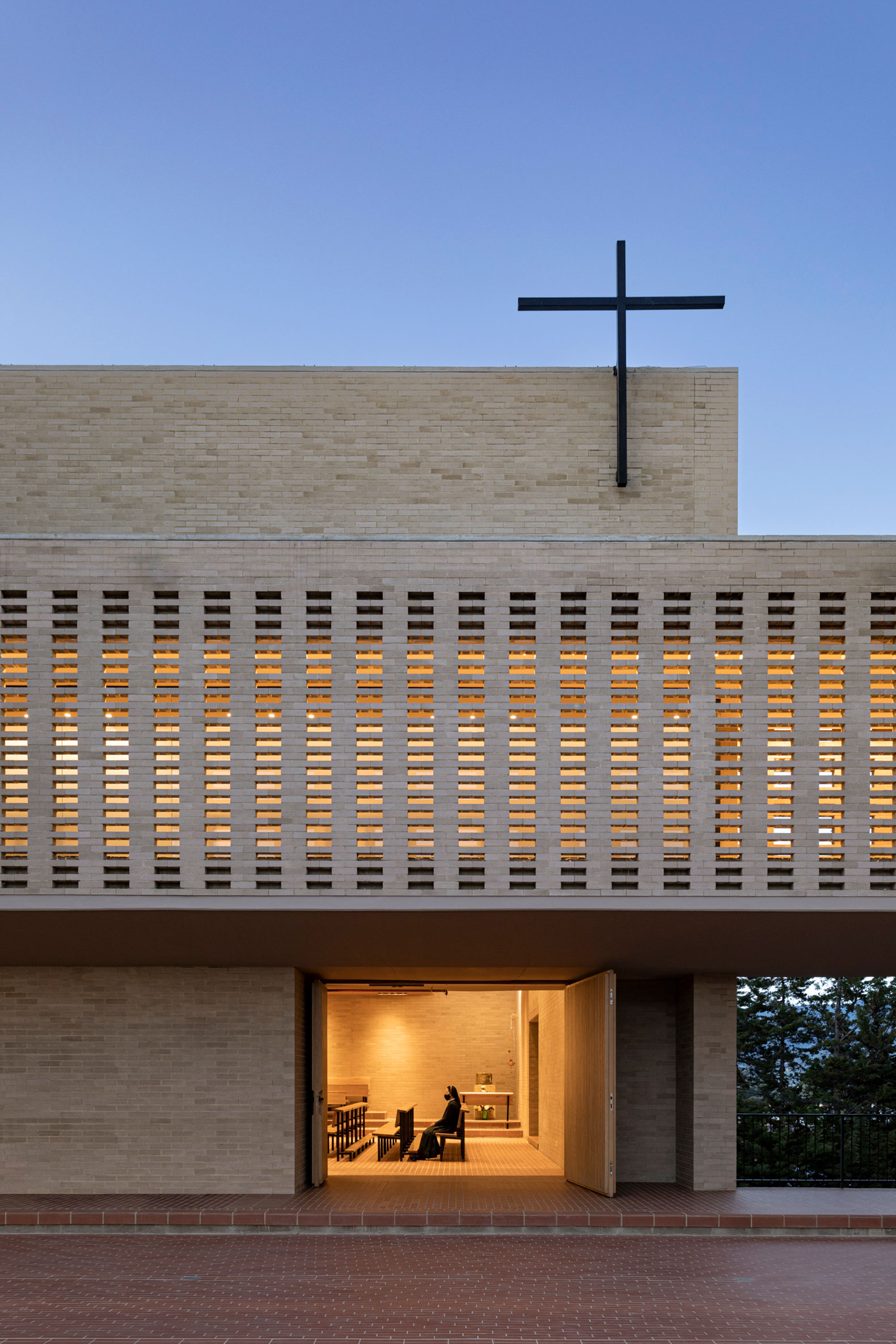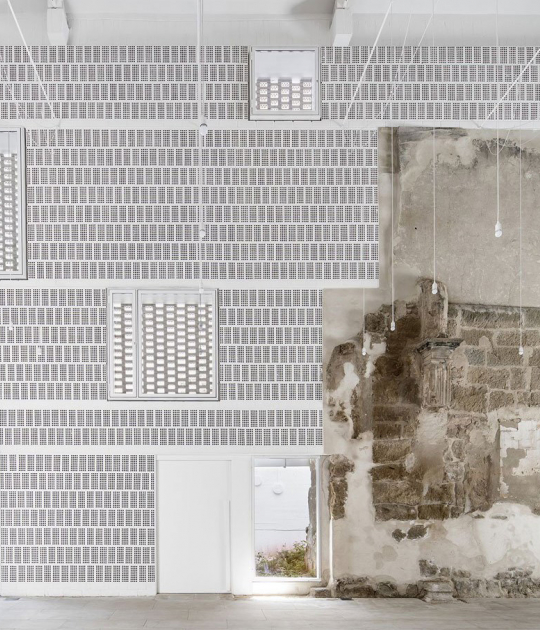
FBD Arquitectura y Diseño Urbano, Fiallo Atelier, MAS Arquitectos, designed the complex with two concepts: a dialogue between place and project, to preserve part of the memory of the hill where it is located, and the creation of a place with a sacred tone.
The design is staggered adapting to the topography, recovering the connection with the next forest in the upper part of the mountain, housing native trees and linking them with its landscaped courtyards.
The sacred concept of the building, pays attention to the typology of monasteries, with austere architecture and paying special attention to play between light and darkness. The project creates a contemplative spirit, with a relationship between the building and its gardens organising the building with three large voids: A gardening courtyard, on the lower part; a plaza at the heart of the project that functions as an atrium for the chapel; and a cloister on the upper part, around which the rooms for residents and visitors are distributed.

Headquarters of the Latin American Episcopal Conference by FBD Arq + Fiallo Atelier + MAS Arq. Photography by Llano fotografía.
Project description by FBD Arquitectura y Diseño Urbano + Fiallo Atelier + MAS Arquitectos
The Latin American Episcopal Council (CELAM) was founded in 1955 by Pope Pius XII. For many years it operated in two locations in Usaquén and Suba, on opposite sides of the hills surrounding Bogotá. The first was the headquarters of CELAM, the diplomatic and administrative body of the Latin American bishopric. The second, on a larger lot and in a less dense area, housed the Pastoral Biblical Center for Latin America and the Caribbean (CEBITE-PAL), the academic arm of CELAM and which houses an important documentary collection.
In 2010, plans began to unify the two locations in a single place, replacing the CEBITEPAL buildings in Suba. To finance this operation, part of the lot was set aside for future development and a small public park was built. The remaining space was reserved for the new headquarters. For the design of this building, a private architectural competition was held in 2016 with the support of the Colombian Society of Architects. The program, developed on 8,250 m², proposes a very intense mix of uses such as rooms for visitors and residents, offices, auditorium, chapel, classrooms and spaces for storing books and documents, among others.

The project is based on putting two fundamental determinants into dialogue: on the one hand, to preserve part of the memory of the hill where it is located, and on the other, to create a place with a sacred tone. To respect the place as much as possible, the project is staggered and adapted to the topography, and to partially recover the forest connected to the upper part of the mountain that is still forest, the project houses the largest possible number of native trees around it and in its landscaped patios. The sacred tone of the building is drawn in a very austere architecture, in which the most important thing is the relationship with the environment and towards its interior in an attitude of contemplation. To achieve this tone, we worked with special emphasis on two aspects; a close relationship with the gardens that surround the project and are housed inside it, and on the other hand with an intentional play between darkness and light that comes from the paths through the corridors, stairs and places of prayer. The project takes as a reference the typology of a monastery where a contemplative spirit is created in the relationship between the building and its gardens. In this way three large voids organize the building.
A landscaped patio in the lower part around which the most public programs of the building are distributed; offices, classrooms, cafeteria and auditorium, located in the lowest part of the lot to have proximity to the park and the city. In the upper part of the patio is the reading room associated with the documentary archive.

A Plaza in the heart of the project that functions as an atrium of the chapel and allows the expansion of the activities of the academic/administrative area. Below this is the archive that documents the history of CELAM and that keeps historical episcopal documents.
A cloister on the upper part around which the rooms for residents and visitors are distributed. The rooms for residents are located to the west and south, seeking the view of the hills and the afternoon sun. In the corners of the floor there are common spaces and oratories.
The three spaces are connected by a circulation axis with single-flight stairs that adapt to the topography. In its surroundings, the project is surrounded by gardens that are connected through contemplation paths, at this time young, but which in a few years will become part of the native forest of the upper part and thus integrate the project into the mountain.






















































